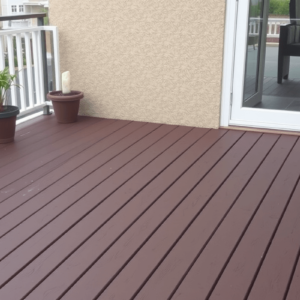Advantages of Using WPC Cladding in Construction Projects
Cladding WPC is a type of building material that has gained significant popularity in recent years. It is a composite material made from wood fibers and plastic, which can be used for exterior cladding, roofing, and decking. In this blog post, we will discuss the advantages of using WPC cladding in construction projects. We will explore its environmental impact, durability, cost-effectiveness, and aesthetic appeal, and provide real-world examples and case studies to support our claims.
Environmental Impact
One of the most significant advantages of cladding WPC is its environmental impact. Traditional wood cladding requires frequent maintenance, such as painting or staining, which can be harmful to the environment. On the other hand, WPC cladding is made from recycled materials and does not require any maintenance, making it a more sustainable option. Additionally, WPC cladding is resistant to rot, decay, and insect damage, which means it has a longer lifespan than traditional wood cladding. This reduces the need for replacement and disposal, further reducing its environmental impact.
Durability
Cladding WPC is highly durable and can withstand harsh weather conditions, including extreme temperatures, moisture, and UV radiation. Unlike traditional wood cladding, WPC cladding does not warp, crack, or split, even after prolonged exposure to the elements. This makes it an ideal choice for buildings in areas with extreme weather conditions. For example, the city of Rotterdam in the Netherlands has installed WPC cladding on several buildings, including the Markthal, a large indoor market hall. The WPC cladding has been able to withstand the harsh weather conditions in the city, including strong winds and heavy rainfall, without any damage.
Cost-effectiveness
Another advantage of cladding WPC is its cost-effectiveness. While the initial cost of WPC cladding may be higher than traditional wood cladding, it is more cost-effective in the long run due to its durability and low maintenance requirements. WPC cladding does not require any painting or staining, which can save money on maintenance costs over time. Additionally, WPC cladding has a longer lifespan than traditional wood cladding, which means it does not need to be replaced as often. This reduces the overall cost of the building and makes it a more cost-effective option in the long run.
Aesthetic Appeal
Cladding WPC also offers a unique aesthetic appeal that cannot be achieved with traditional wood cladding. WPC cladding comes in a variety of colors and finishes, allowing architects and designers to create unique and eye-catching designs. Additionally, WPC cladding can be customized to match the specific needs of a building, making it a versatile option for any project. For example, the headquarters of the Dutch company, Royal HaskoningDHV, features a striking facade made from WPC cladding. The facade is made up of interlocking panels in different shades of green, creating a unique and visually appealing design.
Conclusion
In conclusion, cladding WPC offers several advantages over traditional wood cladding, including its environmental impact, durability, cost-effectiveness, and aesthetic appeal. With its ability to withstand harsh weather conditions, reduce maintenance costs, and offer a unique design, WPC cladding is an excellent choice for any construction project. As more and more architects and builders recognize the benefits of WPC cladding, we can expect to see it become an increasingly popular choice in the construction industry.





Reviews
There are no reviews yet.